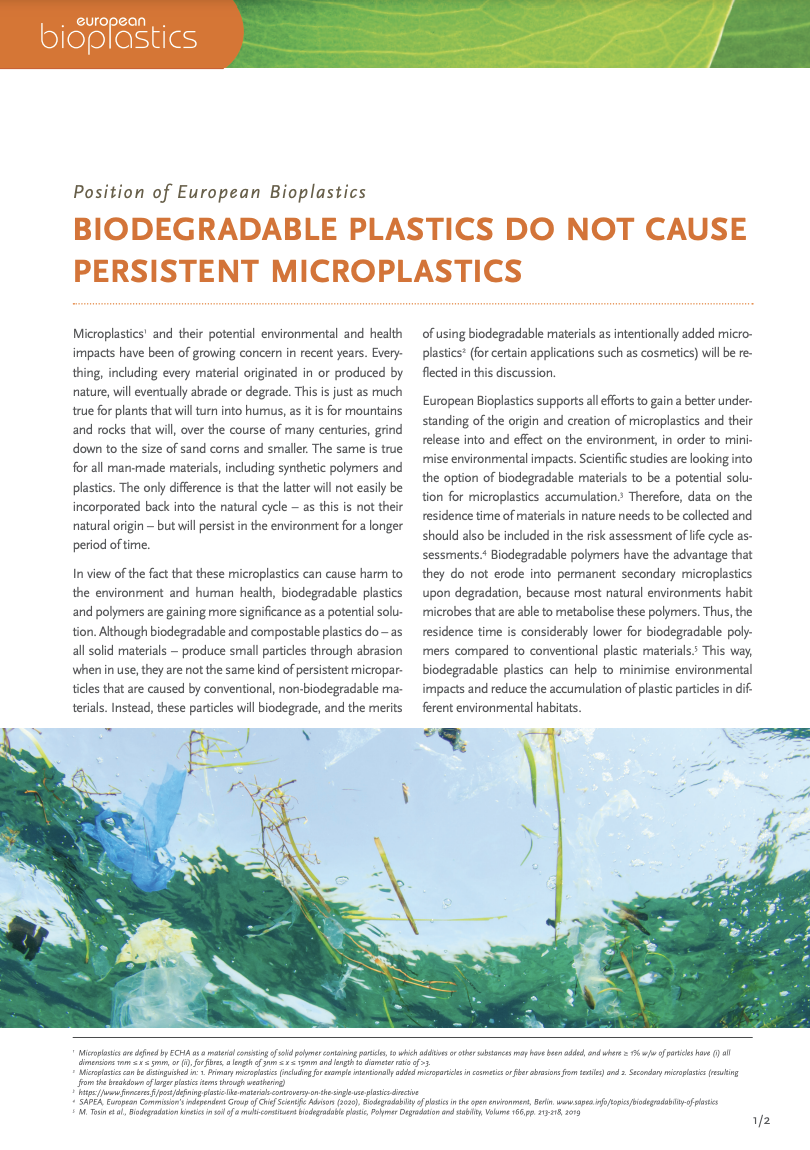Microplastics and their potential environmental and health impacts have been of growing concern in recent years. Everything, including every material originated in or produced by nature, will eventually abrade or degrade. This is just as much true for plants that will turn into humus, as it is for mountains and rocks that will, over the course of many centuries, grind down to the size of sand corns and smaller. The same is true for all man-made materials, including synthetic polymers and plastics. The only difference is that the latter will not easily be incorporated back into the natural cycle – as this is not their natural origin – but will persist in the environment for a longer period of time.
In view of the fact that these microplastics can cause harm to the environment and human health, biodegradable plastics and polymers are gaining more significance as a potential solution. Although biodegradable and compostable plastics do – as all solid materials – produce small particles through abrasion when in use, they are not the same kind of persistent microparticles that are caused by conventional, non-biodegradable materials. Instead, these particles will biodegrade, and the merits of using biodegradable materials as intentionally added microplastics (for certain applications such as cosmetics) will be reflected in this discussion.
European Bioplastics supports all efforts to gain a better understanding of the origin and creation of microplastics and their release into and effect on the environment, in order to minimise environmental impacts. Scientific studies are looking into the option of biodegradable materials to be a potential solution for microplastics accumulation. Therefore, data on the residence time of materials in nature needs to be collected and should also be included in the risk assessment of life cycle assessments. Biodegradable polymers have the advantage that they do not erode into permanent secondary microplastics upon degradation, because most natural environments habit microbes that are able to metabolise these polymers. Thus, the residence time is considerably lower for biodegradable polymers compared to conventional plastic materials.5 This way, biodegradable plastics can help to minimise environmental impacts and reduce the accumulation of plastic particles in different environmental habitats.
